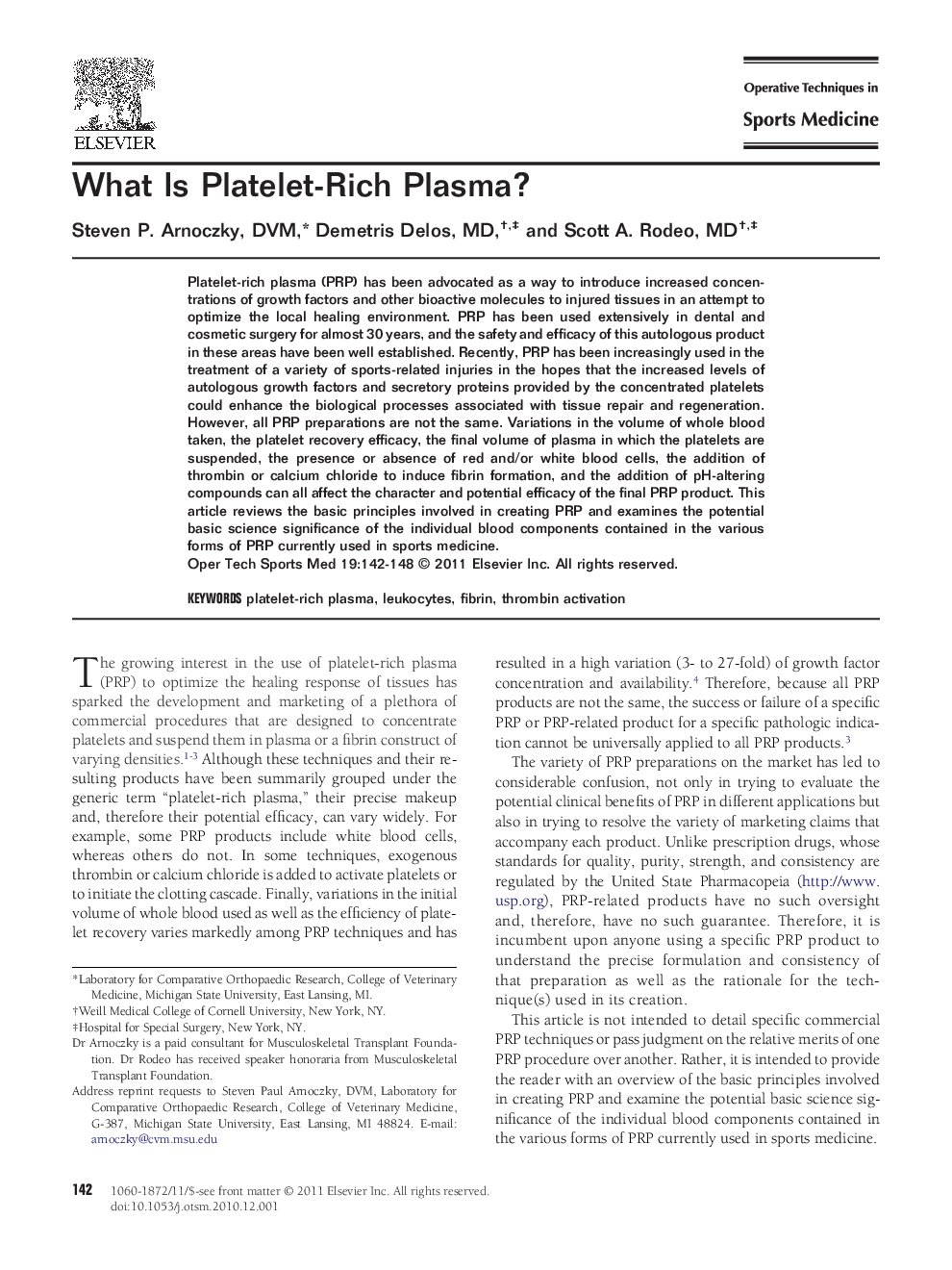| Article ID | Journal | Published Year | Pages | File Type |
|---|---|---|---|---|
| 4079781 | Operative Techniques in Sports Medicine | 2011 | 7 Pages |
Platelet-rich plasma (PRP) has been advocated as a way to introduce increased concentrations of growth factors and other bioactive molecules to injured tissues in an attempt to optimize the local healing environment. PRP has been used extensively in dental and cosmetic surgery for almost 30 years, and the safety and efficacy of this autologous product in these areas have been well established. Recently, PRP has been increasingly used in the treatment of a variety of sports-related injuries in the hopes that the increased levels of autologous growth factors and secretory proteins provided by the concentrated platelets could enhance the biological processes associated with tissue repair and regeneration. However, all PRP preparations are not the same. Variations in the volume of whole blood taken, the platelet recovery efficacy, the final volume of plasma in which the platelets are suspended, the presence or absence of red and/or white blood cells, the addition of thrombin or calcium chloride to induce fibrin formation, and the addition of pH-altering compounds can all affect the character and potential efficacy of the final PRP product. This article reviews the basic principles involved in creating PRP and examines the potential basic science significance of the individual blood components contained in the various forms of PRP currently used in sports medicine.
